Video Gamer is reader-supported. When you buy through links on our site, we may earn an affiliate commission. Prices subject to change. Learn more
Turtle Beach is a fresh face when it comes to racing wheels. Its first foray into driving sims, the VelocityOne Race, is a complete direct-drive system armed with a 900-degree turning mechanism and a 7.2nm wheelbase. Available for $650 / £629, the wheel and pedal rig is competitively priced far below its looming peer, the Logitech G Pro, though it’s also twice the price of the Logitech G923.
Turtle Beach VelocityOne Race

Compatibility
Xbox Series X|S, Xbox One, Windows PCs
Wheel rotation
2,600 degrees
Pedal modularity
Customizable Throttle, Brake & Clutch Pedals
Buttons
6 buttons, 5 latched toggle switches, and 3 rotary dials
As far as packages go, the VelocityOne is as close to all-in-one as you’re going to get. Direct-drive wheelbase, a digital OLED dashboard, detachable control unit, a load-cell brake, a clutch, and a pedal. Having tested out the middling VelocityOne Flight before, I didn’t expect to be blown away by an impressive build quality or a novel experience. At nearly double the price of the flight stick, aspects of Turtle Beach’s racing wheel feel like a huge upgrade in terms of quality and design, whereas other elements fall victim to irritating flaws.
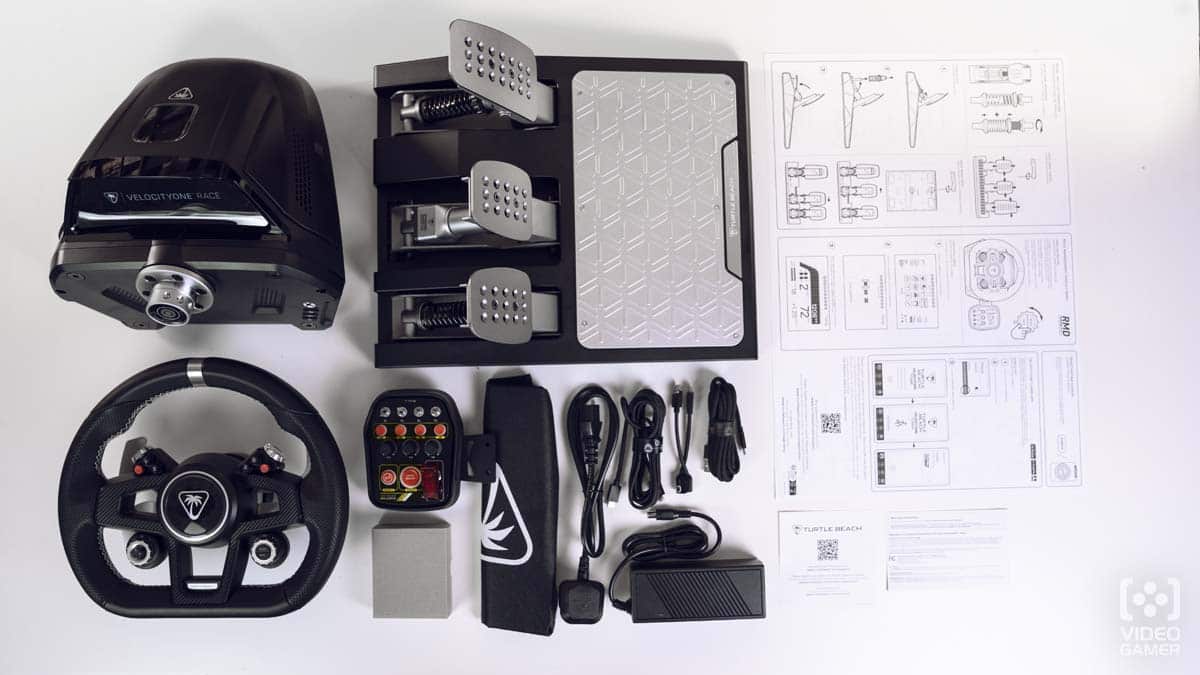
Let’s start with what’s actually in the box
Expect the wheelbase, the detachable steering wheel, pedal block, modular control unit, a power block accompanied by kettle cables fit for all regions, and more than enough USB-C to hook everything up. The VelocityOne Race is as plug-and-play as possible, so long as you have Turtle Beach’s Tuner software installed.
Additionally, the integrated clamps available means that you will have few issues configuring the racing wheel for your sim setup, and there’s also a built-in Allen key tool that makes building even easier.
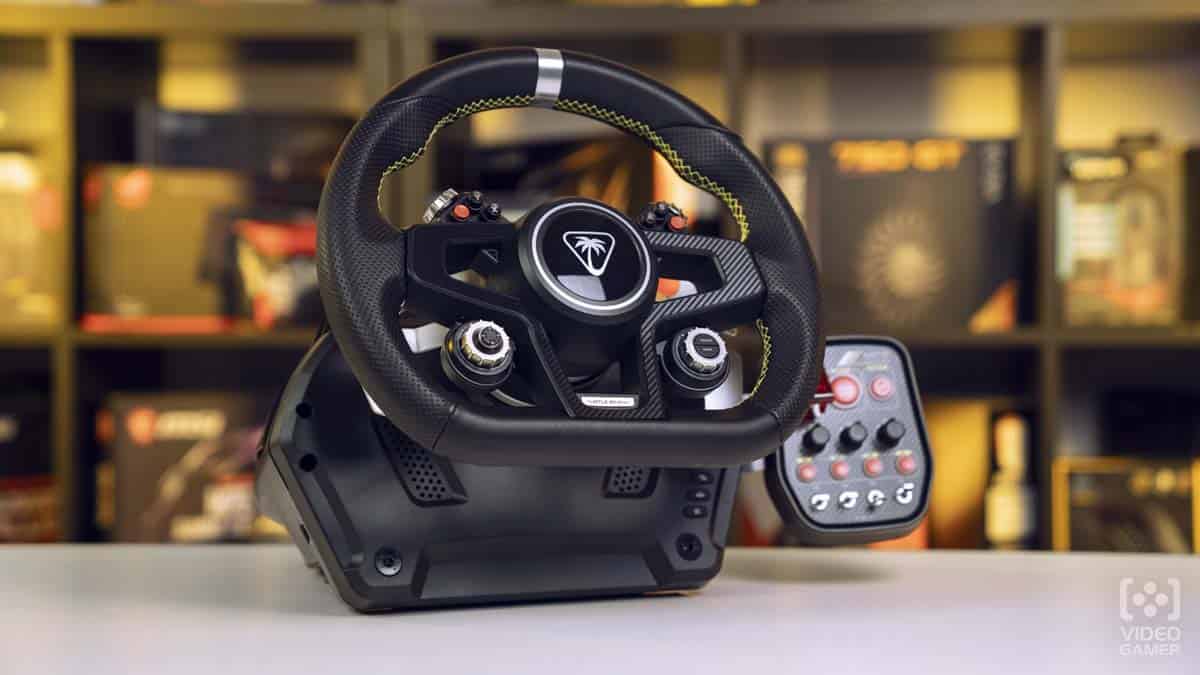
Design and features
The VelocityOne Race features a D-shaped steering wheel locked into place with a mechanism similar to a camera’s lens. On the wheel itself, there are all of the regular face buttons you would expect on a controller, though there’s an assortment of extra knobs and dials to get used to as well. Neatly tucked behind the wheel are two tactile gear-shift paddles, and just below them are a pair of acutely sensitive trigger paddles with a wide range of reading.
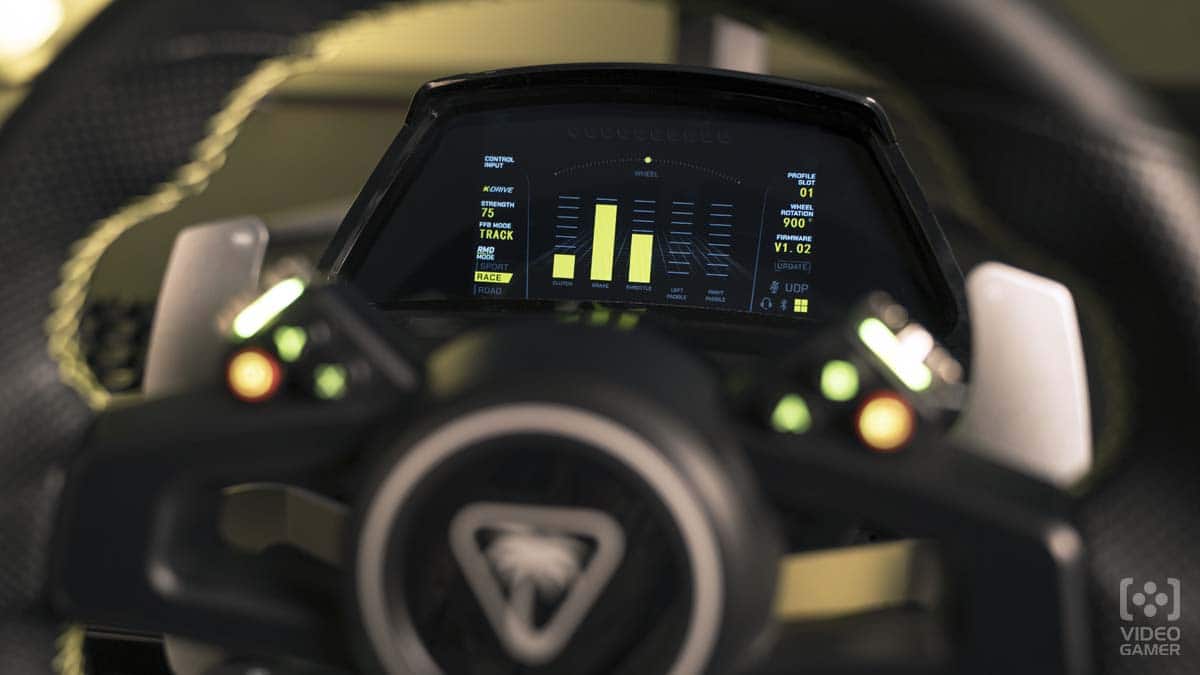
None of these are extraordinary features, though the OLED dashboard baked into the wheelbase makes a concerted effort to set the VelocityOne Race Wheel apart from other rigs. You probably won’t find much use for it while locked into your fifth lap of the Saudi Grand Prix, though you will appreciate its presence while calibrating the wheel’s torque and paddle sensitivity, which you can do with all those knobs and dials mentioned earlier.
All of these features stack up to create an immersive experience that’s not easily rivalled.
The VelocityOne Race Wheel sports a very well encapsulated ecosystem. Aside from the initial driver install when you first hook it up, you’re unlikely to need to open up the VelocityOne Tuner app after that. This is down to the Race Management Display previously mentioned, but also the handy Control Unit wired into the side of the wheelbase. This is a very handy feature and goes a long way in maintaining immersion.
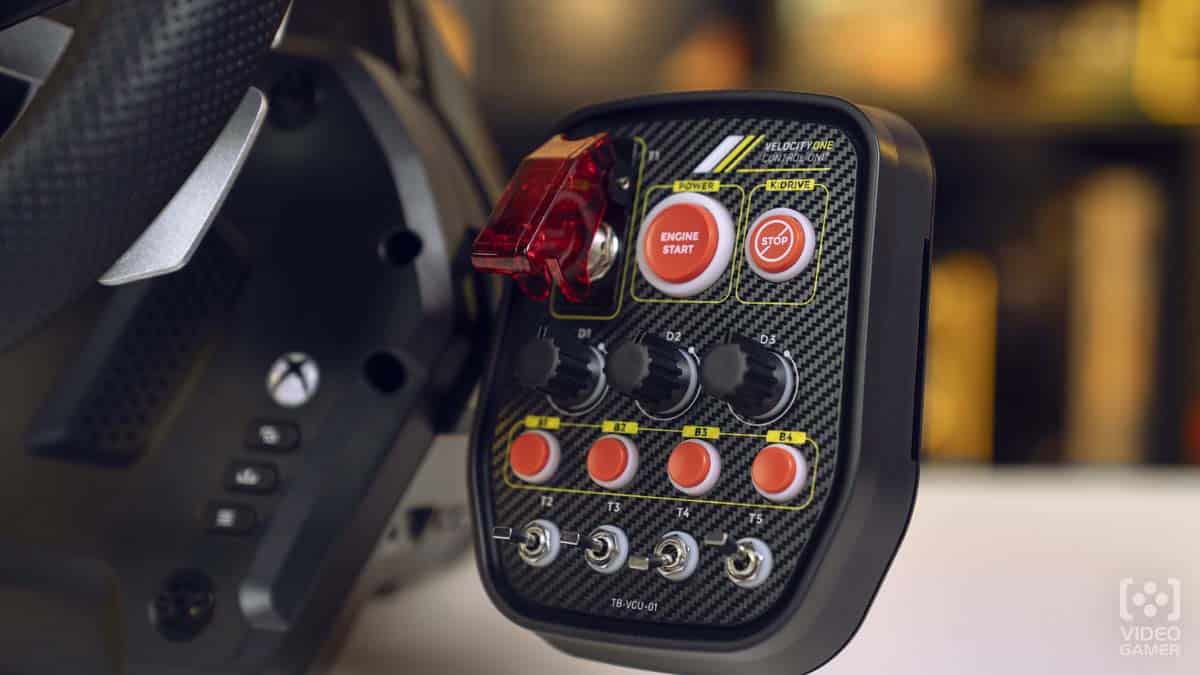
Where the engineering behind the wheel’s turning mechanism excels, it’s let down in a few key areas in which quality is sacrificed. The control unit’s buttons, for example, feel misplaced entirely. The cheap plastic caps have diffused light leaking out of them, and it all feels a little out of place above the slightly more premium feeling metal flick switches.
Similarly, I found it hard to actually make use of the control unit button box. Compared to the flight sim scene, most modern racing games are geared towards a more casual experience, and the design language of this unit does not communicate well with that. It was a real struggle to make use of the flick switches, though technical games such as rFactor 2 make use of them well.
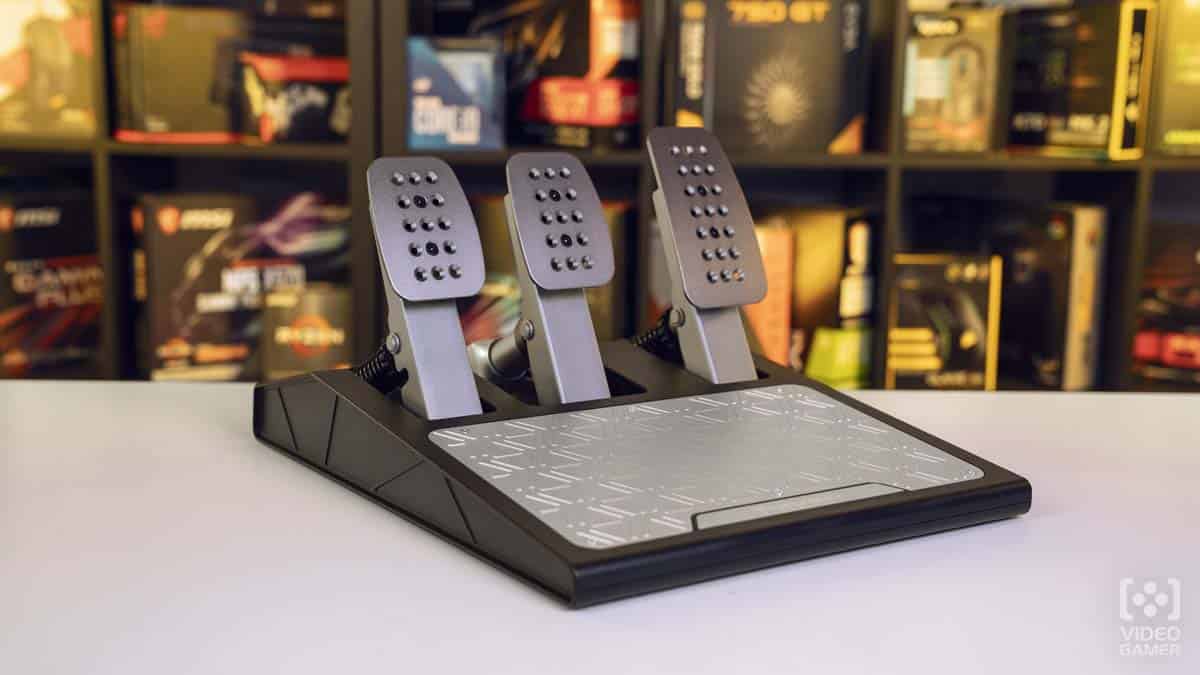
The pedals are a bit of a let down
The biggest concern with the Velocity One Race Wheel is not in its steering or control, I have very few qualms with that. Instead, it’s the pedals that caused the most grief. If you’re playing on a hard surface, as I was, the sticky pads will not do much in the way of preventing the pedal base from slipping and sliding. This was extremely uncomfortable to deal with, and I would often have to hook the base with the heel of my foot to pull it back.
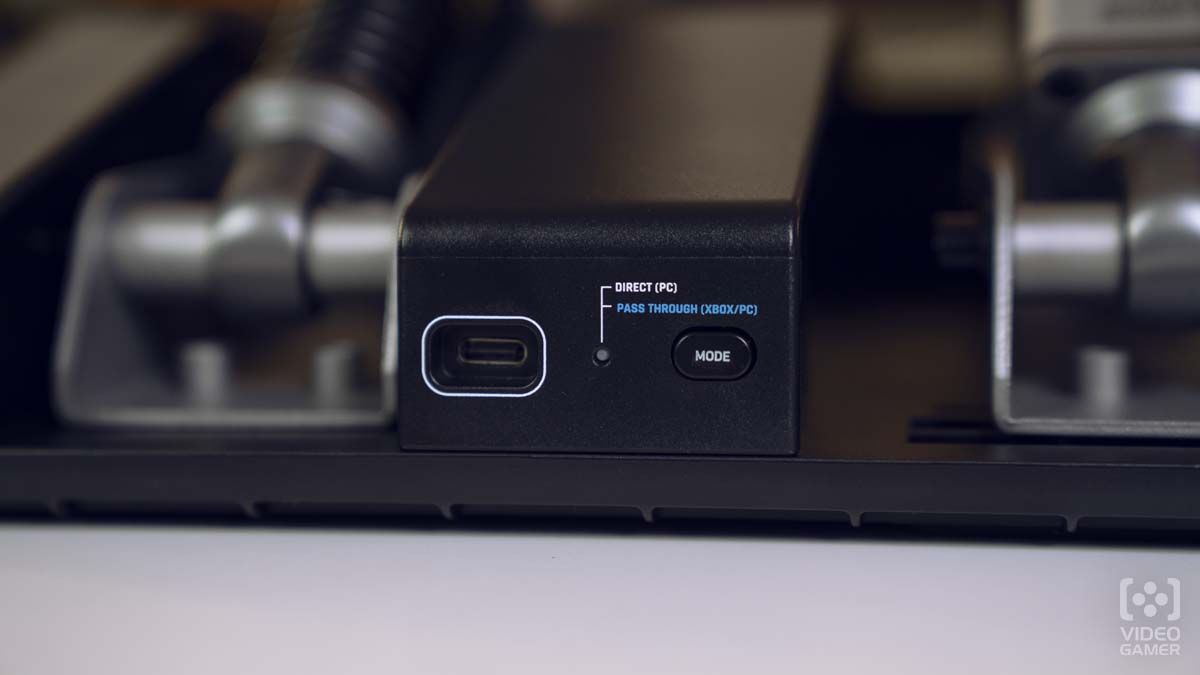
The obvious solution here is to push the wheelbase up against a wall, though the protruding USB cable will prevent that from being feasible.
Performance
You will find that it performs very well, despite the design flaws which make comfort and positioning difficult. The direct-drive wheel hides a surprising amount of torque in its turning mechanism, and it’s responsive and visceral at times.
The first time I hooked up the VelocityOne Race Wheel and Pedals to my PC, I had a mug of coffee a little too close to it on my desk. Fast forward to five minutes later, the chequered flag drops. I fumble with the clutch and slam down on the accelerator. It’s not long before I’ve crashed into the side, my front wheels spun out, and the high torque VelocityOne steering wheel started rattling my desk around, sending coffee everywhere.
Okay, at this point I hadn’t even clamped the wheel onto the desk yet, but it was a rude awakening displaying the power inside this sim controller.
The pedals feel similarly responsive, at least after you’ve managed to lock the base in place with whatever makeshift contraption you can.
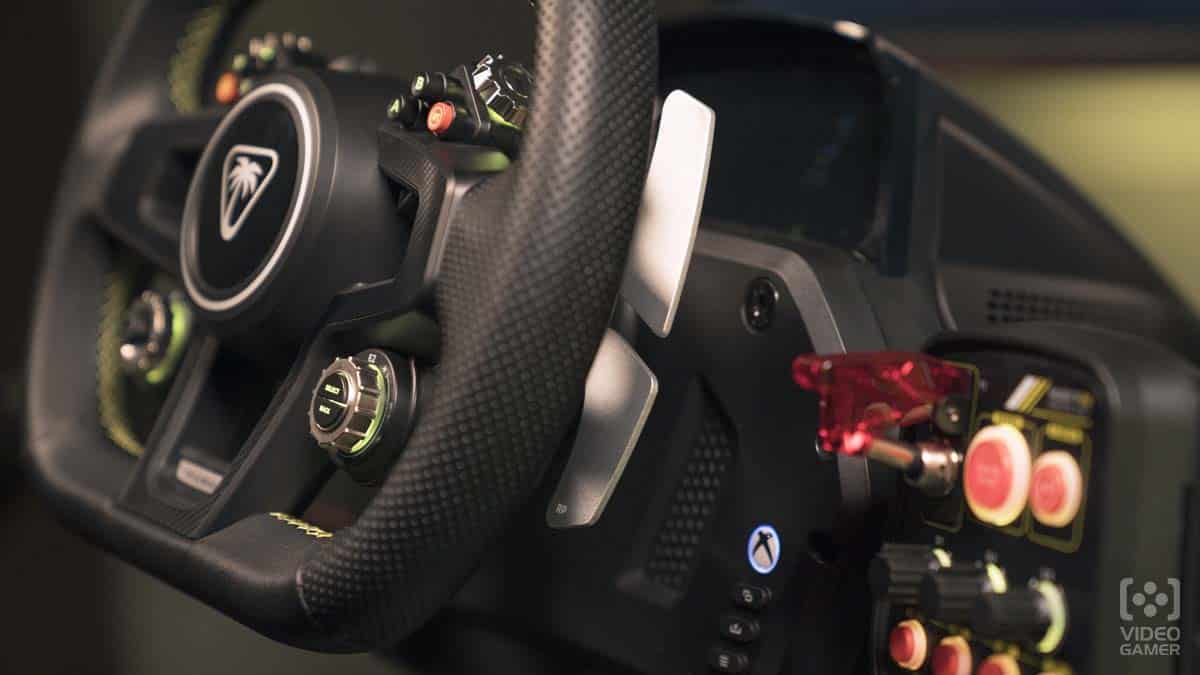
Racing with this wheel, whether it’s in Forza Motorsport or MotoGP 24, feels fantastic. The metal paddles behind the wheel act as nifty gear-shifters, and you will quickly become accustomed to using them as such. As previously mentioned, the built-in HUD does little but show you wheel alignment while you’re racing. Perhaps when the Velocity One ecosystem expands, it will see more usage beyond its current gimmick.
In all honesty, recommending the Velocity One Race Wheel is a tough sell. For one, it’s disproportionately expensive compared to other wheels on the market. The direct-drive wheel base is a very welcome feature, and aptly explains the dear price-tag, though aside from that the rest feels like a forgotten afterthought. Much of this is influenced by the USB port positioning on the pedals, which makes finding the optimal set-up quite tedious.
If you can get over that, alongside the price, then you’ve nabbed yourself a great wheel that feels great no matter what game you get it to run with. If you can’t, then you’re better off with a cheaper alternative that’s going to pack as much performance and design into it without the burn marks of £629 leaving your wallet.
